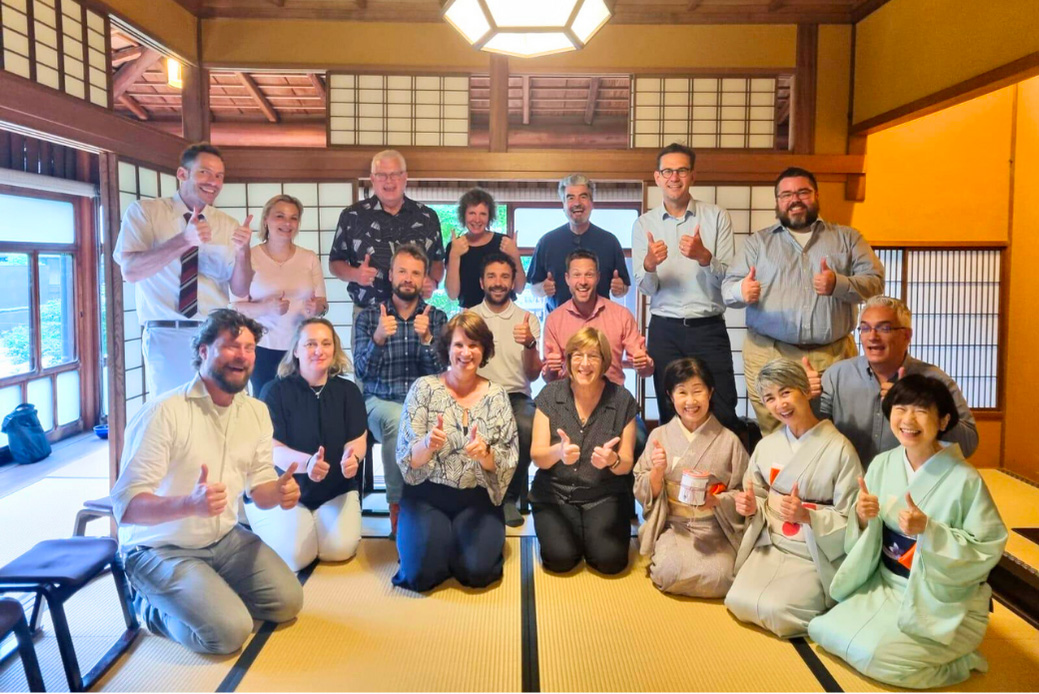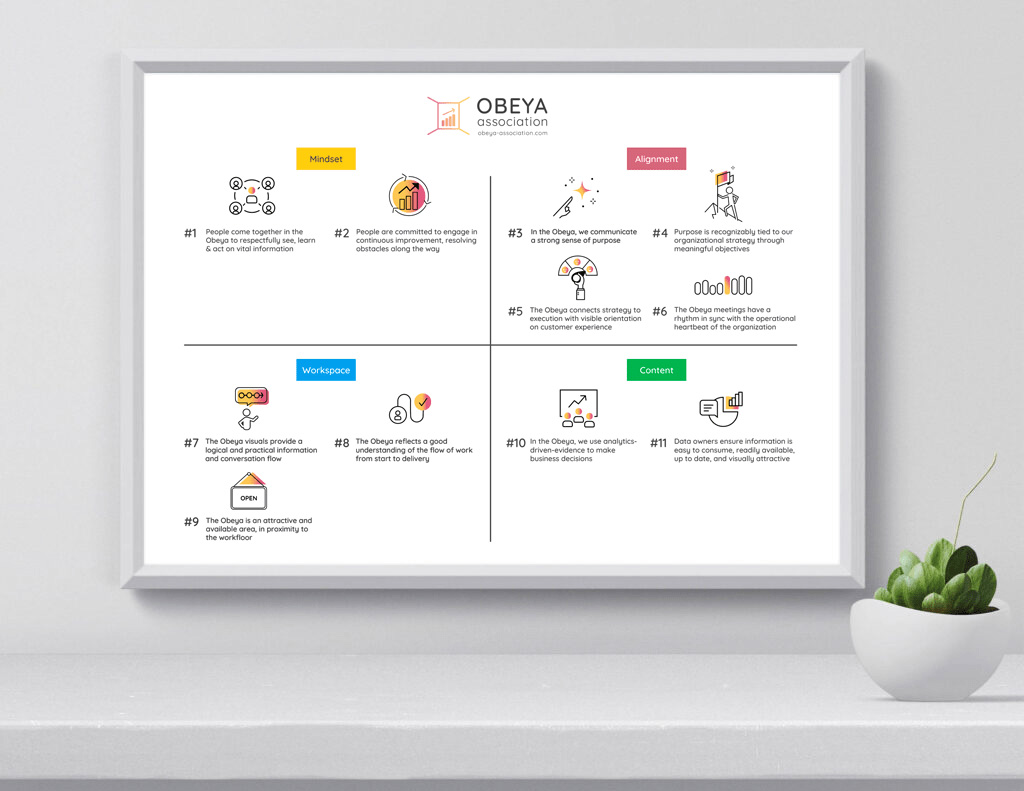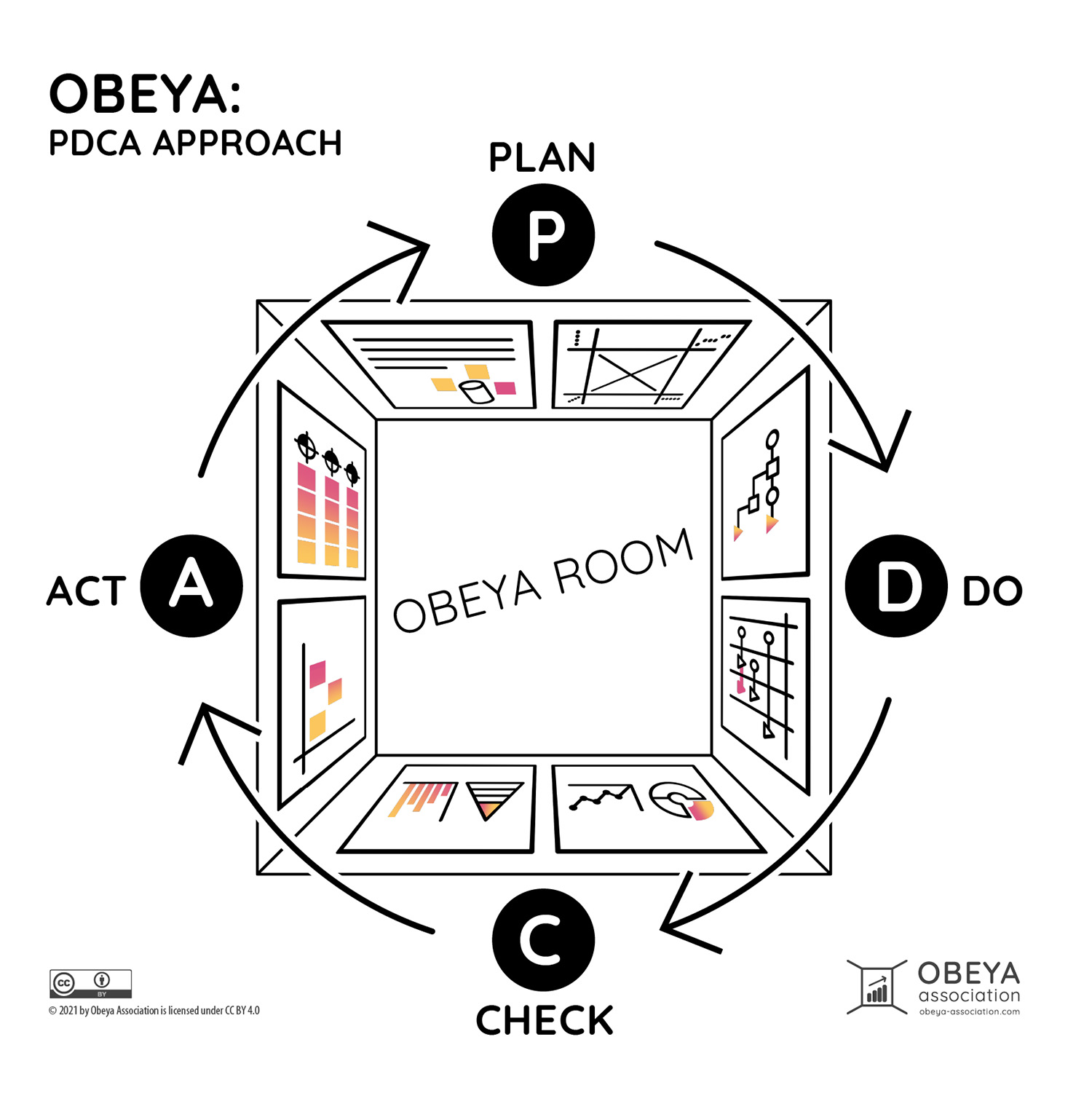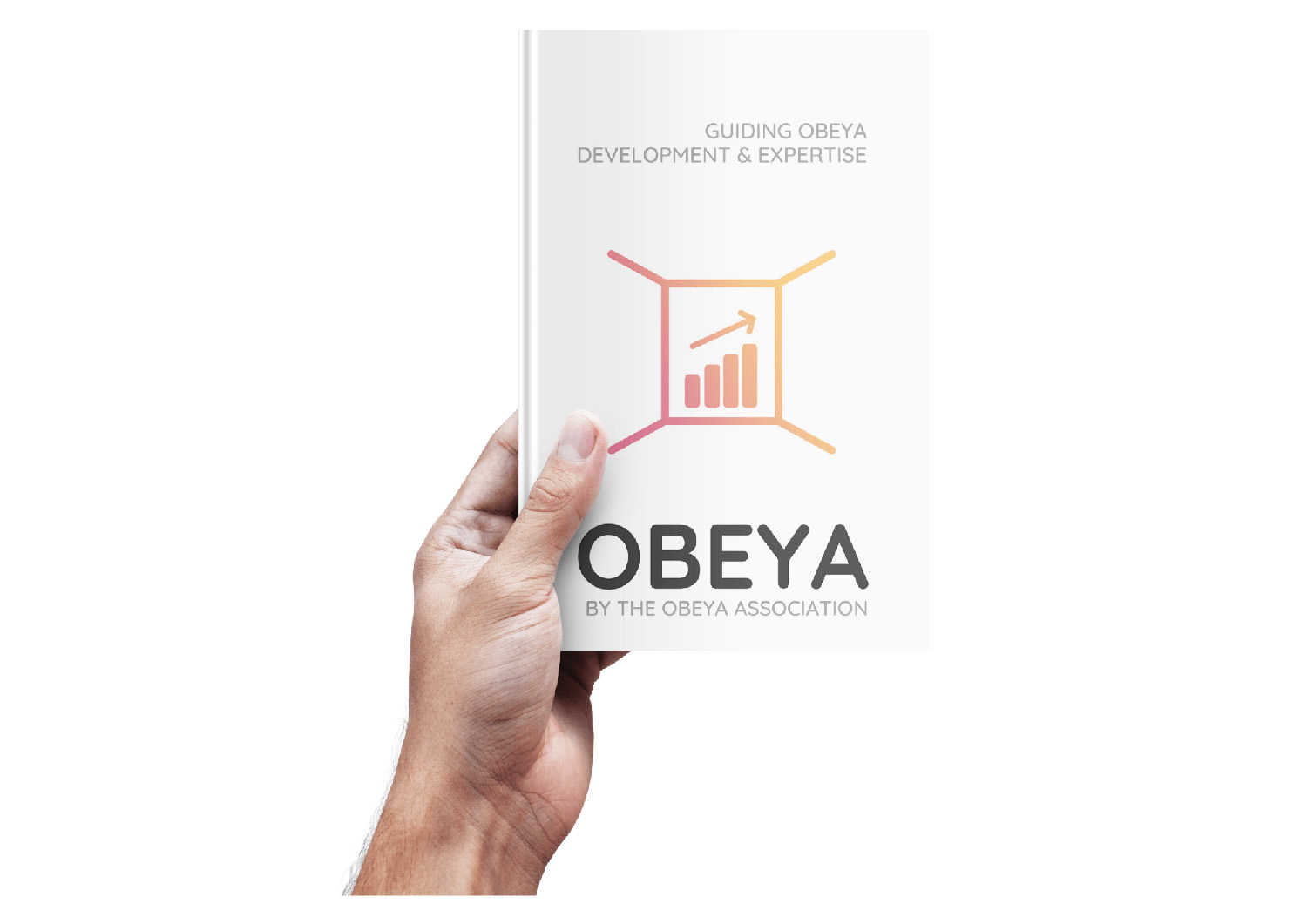How to build an Obeya Room?
Obeya focuses on getting results and taking decisions there where the information is. Obeya aligns your organization and accelerates change and Continuous Improvement. An Obeya is a digital, physical or hybrid workspace where all relevant information is available to everyone.
It is a space where strategy and execution are visually connected. Obeya provides overview and insight into the status of goals, shows you where bottlenecks must be removed and where performance can be improved.
Want to learn more? Find out more on what an Obeya is, go to the 11 Obeya Principles and the Obeya Roles or read more on Obeya methods. You can read more on digital Obeya here.
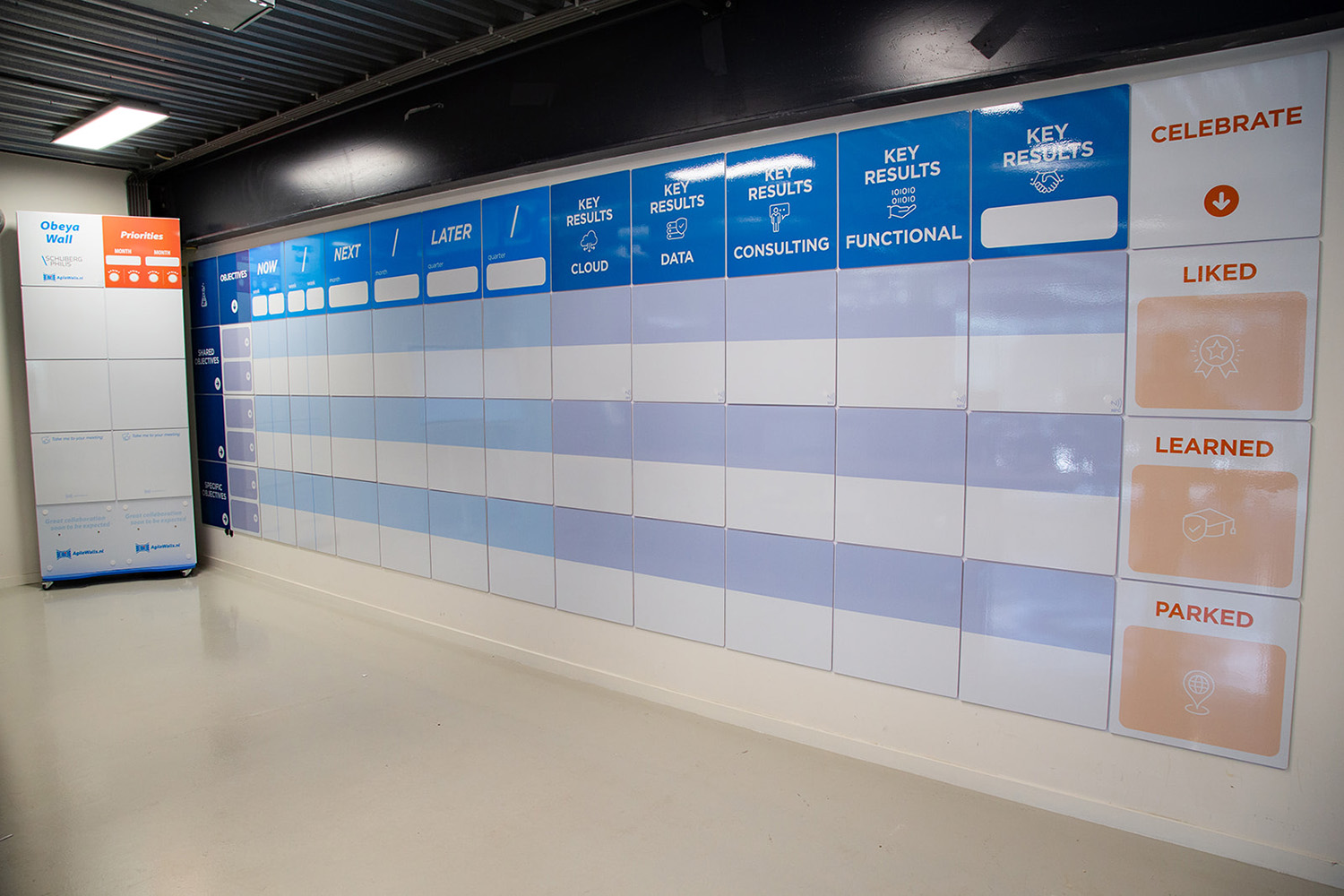
Image source: AgileWalls - https://agilewalls.com
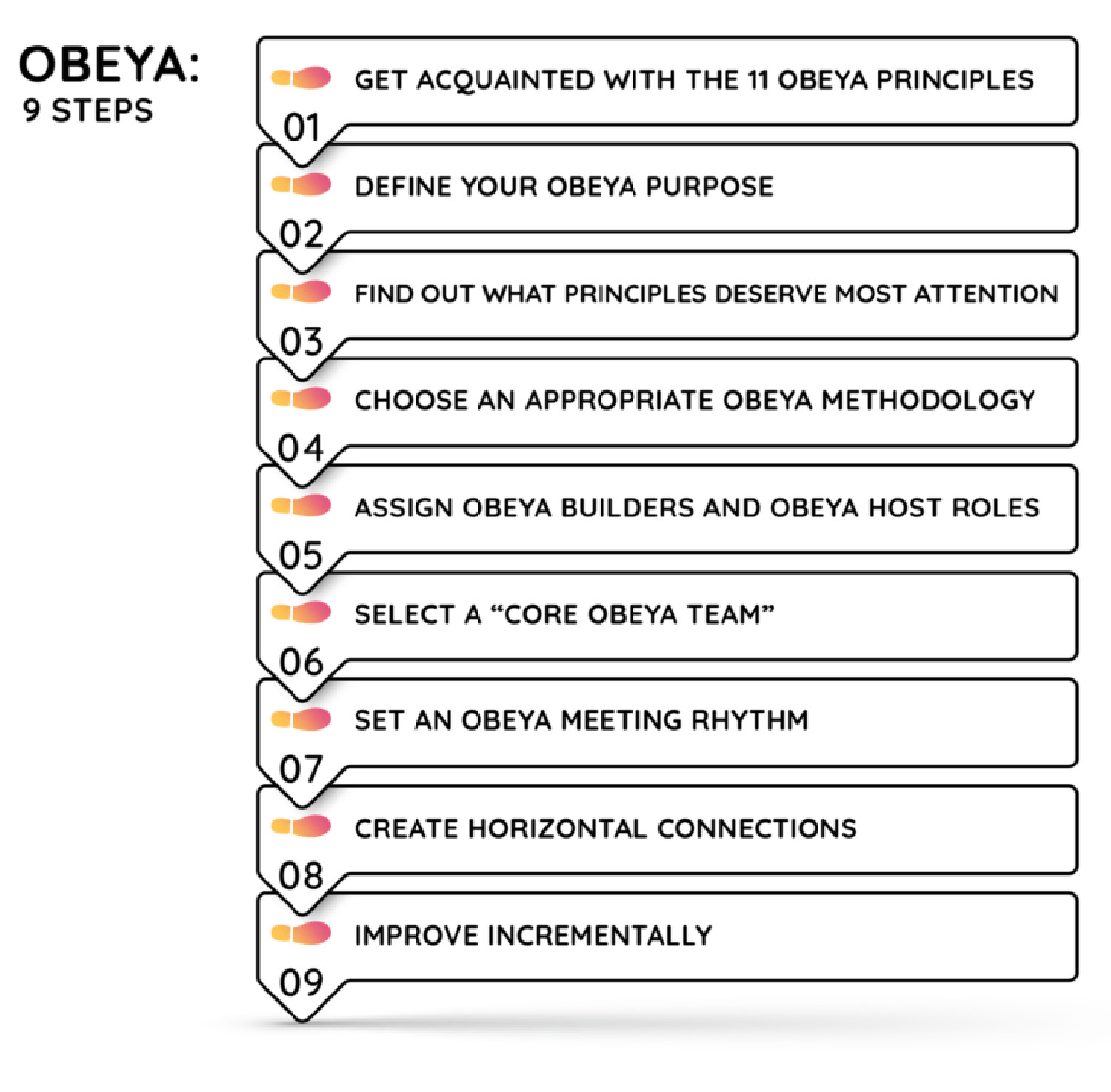
How to start using Obeya Rooms
Starting out with Obeya can be a bit overwhelming at first. The information on this page should get you pointed in the right direction.
Based on experiences from our network we have been able to define 9 steps that provide you with a structured approach in setting up your Obeya. Important to note; approaches working for one organization, didn’t always work the same way for another organization. Similarly, different approaches sometimes produced equally good results.
This writing aims to provide Obeya practitioners with help and direction, without being dogmatic. There might be perfectly good reasons to deviate from the steps defined below. There is no absolute truth and an Obeya is a valuable learning experience starting from the moment you set out. Nevertheless, we are confident that the steps below capture a lot of value from experience and can definitely kickstart your Obeya process.
Step 1: Get acquainted with the 11 Obeya Principles
Generally speaking, we would advise anyone to get acquainted with the 11 Obeya Principles first. The 11 Obeya Principles span across 4 quadrants: Mindset, Alignment, Workspace and Content.
Together they define what is an Obeya. They help you make clear distinctions to what is needed in terms of behaviour, rhythm, data, appearance and so on.
Throwing them all on one pile, they are probably a lot to take in. So study them carefully and take them into account one by one and you’ll see you can start painting a picture of how you could apply each Principle to your specific situation.
Step 2: Define your Obeya Purpose
What decisions do you want to inform? It might sound like an odd question, but if you look twice it is really what an Obeya is all about. There are a couple of things important at this stage.
Firstly, to get people onboard building and accepting Obeya, there needs to be a sense of urgency. You need to figure out (and define) what the problem is that you want to solve with an Obeya.
Secondly, a definition of success. If you succeed, what has changed? It helps you to define and communicate the role that your Obeya will play and why people should get on board. Distilling an Obeya purpose early on in the process will serve as a guiding star throughout and at certain points in time it will help you when your Obeya risks derailing or growing out of control.
The Obeya Fundamentals training module makes for a good start at this stage. Obeya Associates can download the module in the Obeya Associates document library when logged in as an Obeya Associate.
Step 2: Define your Obeya Purpose
Step 3: Find out what principles deserve most attention
Now you’ve acquainted yourself with what an Obeya is and defined its purpose out of the urgency in your organization, a focused start is really helpful. From experience we know that it can be helpful to focus. The experience you gain in the process can guide your improvements and will inform you on what to start next.
For this reason we designed the Obeya Focus Scan. Don’t expect anything fancy; the scan is designed so you can perform it whilst having a beer at the bar. Pragmatic and straightforward, just the way you would want your Obeya to work. It contains a simple rating system that you can carry out by yourself, but probably even better to get in some group results. It shows your top 3 priorities in terms of which of the 11 Obeya Principles to focus on. Recommended is to make this a recurring exercise, say every 3 months.
Step 4: Choose an appropriate Obeya Methodology
The 11 Obeya Principles provide you with an overarching framework but there are a few approaches or methodologies that you might want to consider for your first Obeya setup. From here you can further improve based on your needs and learnings as you progress your Obeya.
Three often used methodologies are: 1) the 6 panels approach, 2) the PDCA approach and 3) the Leading with Obeya approach.
Choosing either one of these basic setups will help in getting your first basic data/information categories organized.
Step 5: Assign Obeya Builders and Obeya Host roles
We cannot overemphasize the importance of having or developing skilled Obeya professionals right from the start. Not only will the quality (and thus effectiveness) of your Obeya improve when knowledgeable professionals are assigned, the speed of Obeya development can also increase significantly.
Lastly, there will be a moment when your Obeya transforms from “the next new thing” into the new way of working. In this transition the “old system” shows a certain degree of pullback towards the status quo. Pulling back towards the exact situation that your organization tries to move away from. Training dedicated and commited Obeya professionals can make all the difference in the long run.
In the book “Obeya – by the Obeya Association” we show practical links between the 11 Obeya Principles and the roles of the Obeya Builders and Obeya Hosts. We recommend you to get acquainted with the practical guidance provided. For more professional development on the roles themselves, you can download the Obeya training modules in the Obeya Document Library (Obeya Associates only)
Step 6: Select a “Core Obeya Team” to start with
Following your groundwork and selection on who will carry out the Obeya Builders and Obeya Host roles, you should consider which team of people you want to start your Obeya with.
Ideally, the team consists of people both willing and able to contribute to the development of your Obeya and at the same time benefitting from the results straightaway. The team shouldn’t be too large as you want to be able to move forward with some speed. There should be enough common ground between the individuals (and parts of the organization they represent) to be able to discuss and decide on actual and relevant matters.
Be sure to involve some individuals that have access to (and understand) relevant data sources. Choose people that are able to commit some time and effort into the process and try to refrain from switching or delegating this effort as much as you can.
An example of an Obeya core team composition could be: 1 senior sponsor, 3 key users, 1 Obeya Builder, 1 Obeya Host, 2 data specialists.

Step 6: Select a “Core Obeya Team”
Step 7: Set an Obeya Meeting Rhythm
An Obeya meeting rhythm can be considered the heartbeat of your Obeya – if not the eventual heartbeat of your organization. It provides structure and predictability.
Setting a rhythm straight from the start allows you to improve your Obeya incrementally. It helps improve on the Obeya items that are actually relevant and refrains you from investing time and effort in developing Obeya content that seems like a great plan on paper, but has no real practical or business value. The value of your Obeya setup should always be considered alongside the results of its users.
A clear rhythm allows you to develop just that. In the starting phase of an Obeya we have seen a combination of two rhythms work well: a bi-weekly Obeya rhythm in which you actually put the Obeya to use (even when the Obeya might not be considered “ready”, we advise to start anyway) and bi-weekly work sessions in which the team actively works on building and improving the Obeya, using the feedback from the other sessions and your Obeya Focus Scan results as guidance.
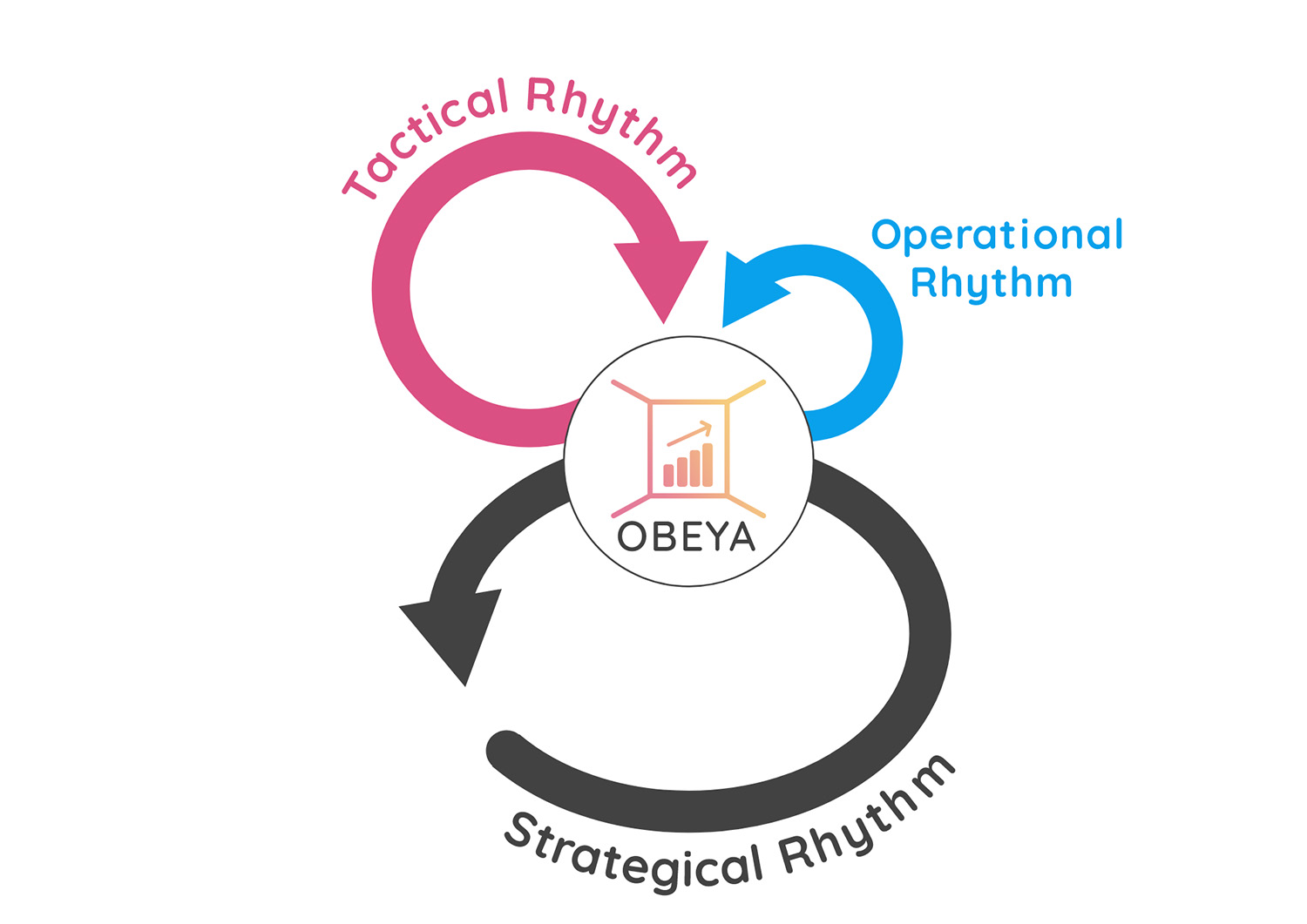
Step 7: Set an Obeya Rhythm
Later in the process, we see many Obeya practitioners set up more distinct rhythms. For example, a three monthly strategical rhythm (as strategic objectives are unlikely to change very frequently), a monthly performance meeting rhythm (as most data just doesn’t update more frequently than monthly), a bi-weekly tactical rhythm (short enough to remain aligned on planning, execution and urgent matters, matching with for example most scrum sprint timespans) and weekly or sometimes even daily operational workfloor rhythms to align daily activities with the overarching plan in sight.
Step 8: Create horizontal connections
Involve more stakeholders in your Obeya meeting rhythms as you proceed. There are several ways to do this that don’t necessarily exclude each other.
The first is to communicate about the Obeya to the wider organization. Let people know the Obeya is there, why it is there and what value it brings. Be sure to communicate the decisions taken in the Obeya to whom it may concern. Try to be as transparent in your Obeya setup process as you can. Obviously Obeya Builders have an important stake in expanding the reach of the Obeya whilst maintaining quality and effectiveness. Through frequent communication it is likely you’ll get more people or area’s interested to participate.
Secondly, assess which parties are actually missing in your Obeya meetings when you try to reach decisions. If the same names, departments, teams, etc keep getting mentioned as missing, you could pro-actively extend an invite. If you don’t involve the right people at the right time they might become potential bottlenecks for your decision making, with loss of energy and commitment of the already participating parties as a result.
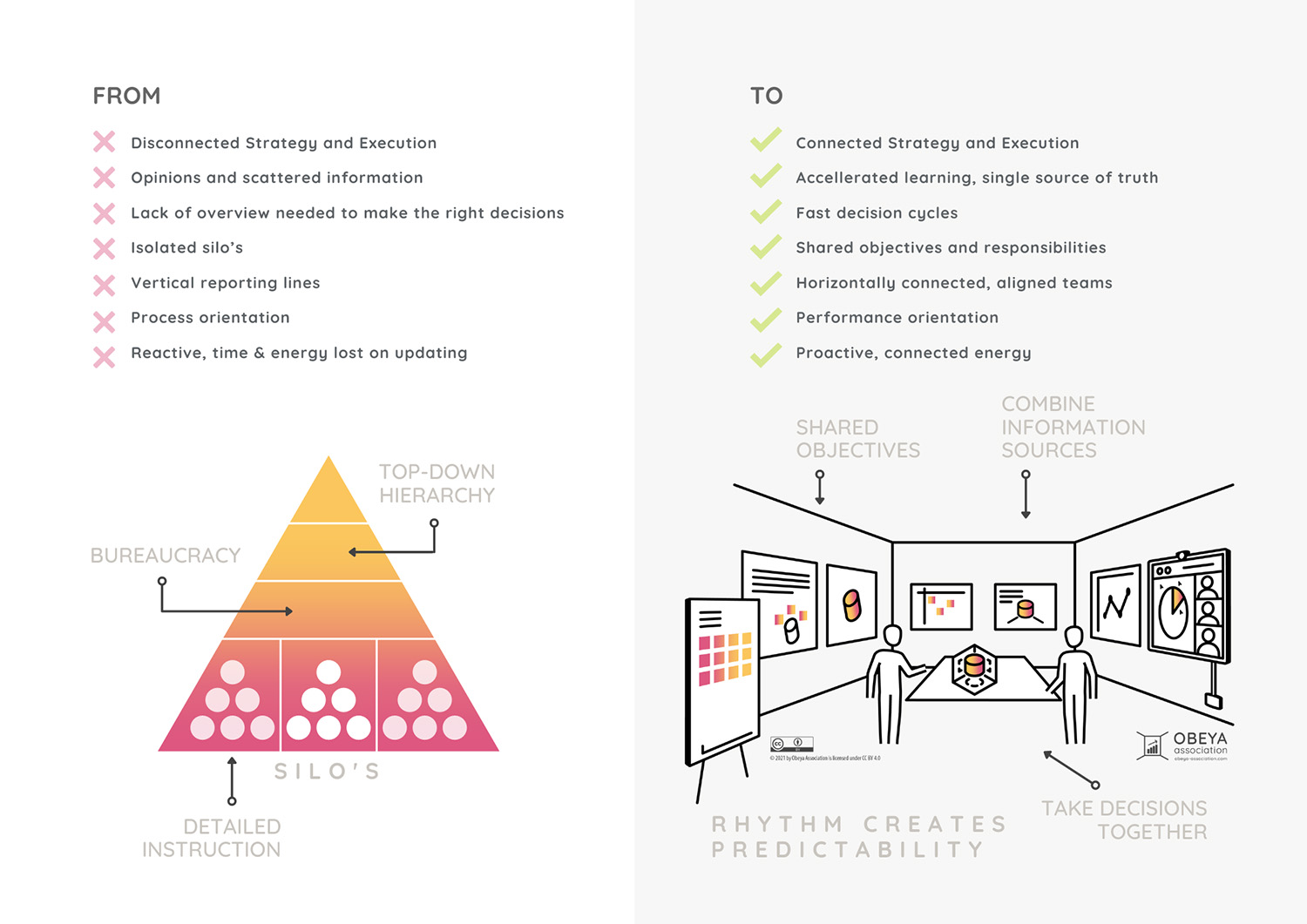
Step 8: Create horizontal connections
A third way is to stick to a more rigorous onboarding plan in which you onboard people or parts of the organization following a predetermined schedule across a certain timespan.
Step 9: Improve incrementally
An Obeya is – at any point in time – a quite accurate mirror of what is actually happening in your organization. If certain information is missing in your Obeya, very likely it will be missing on the workfloor as well. If you portray too many strategic objectives, probably teams are misaligned or lack focus. If your meetings constantly overrun, usually this is a structural problem throughout. An Obeya relays information through its imperfections, not by means of being complete or finished.
Your Obeya is your organization in a nutshell. The “faults” in your Obeya convey important information on what is happening on the workfloor. It is easy to get frustrated by an Obeya that never seems finished, whilst actually the Obeya is already relaying all the information back to you, needed for you to take the next step forward. Organizations are dynamic entities, constantly moving, learning and dealing with the outside world. Accept this, and it becomes easier to understand that your Obeya is never finished.
The Obeya merely shows you what to do next.
Step 9: Improve incrementally
Join the Obeya Association
The Obeya Association is a community, a platform and a worldwide network. We aim to develop Obeya “from tool to philosophy”. We are Obeya practitioners; discussing, creating, sharing, testing and continuously improving Obeya practices and quality standards. We develop meaningful training materials and provide professional Obeya examination.
